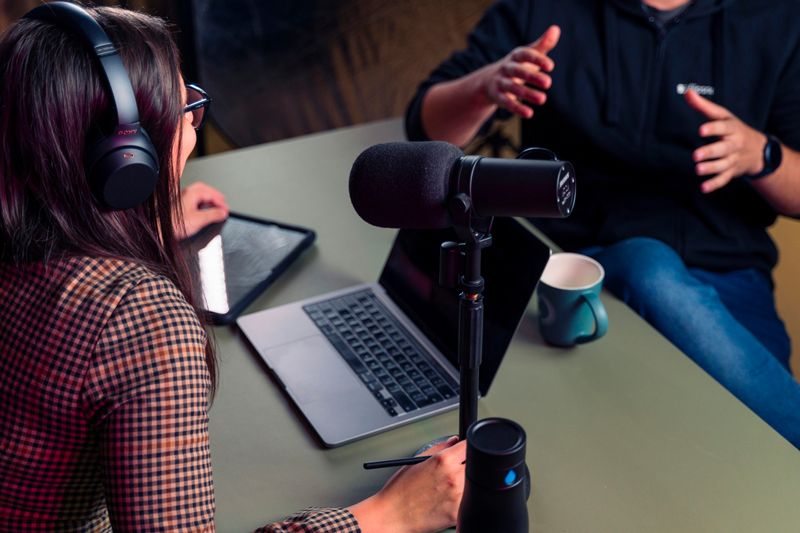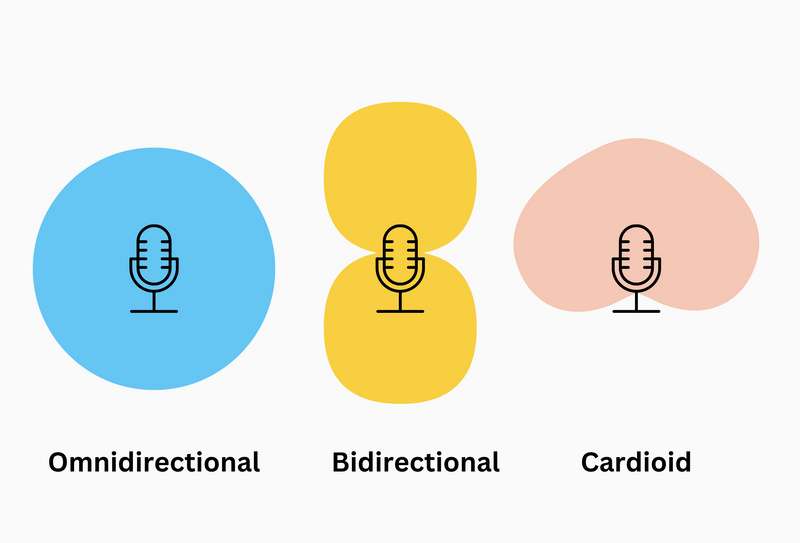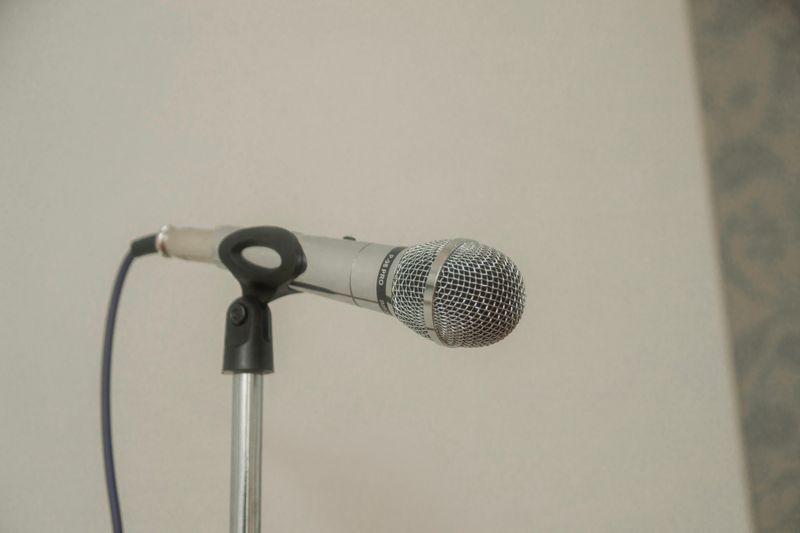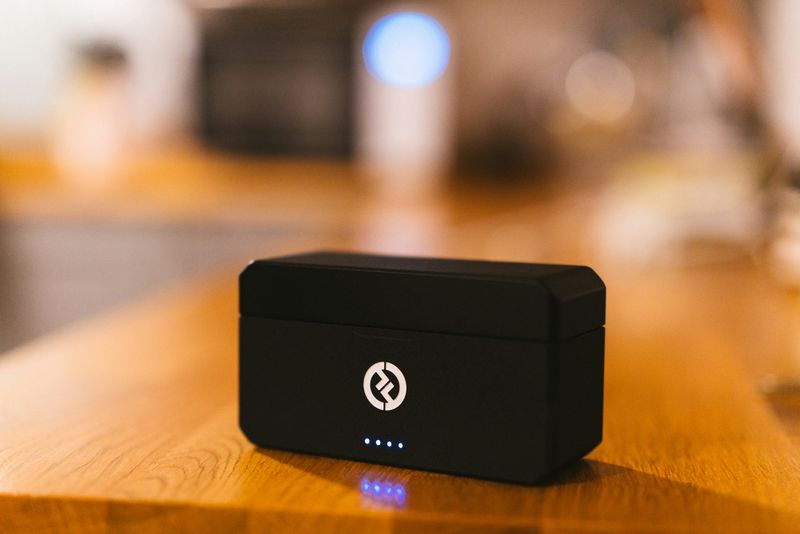You wrote a great script, and now you just need a way to record it to share.

A good microphone records high-quality sound, and many models plug right into your computer for easy saving and editing. Once you know what to look for in a mic, you can pick the best one for your needs.
How Much Will It Cost?

If you have a mobile phone or laptop, the lowest-cost option is to use the built-in mics in these devices. However, the sound quality may not be up to your standards. It's worth recording a voice sample on a phone or laptop first before investing in an external mic.
The cost of an external mic depends on its type, brand, durability, and accessories. A mic that is $100 USD or under will suit most home recording needs.
How Will You Use It?
 Photo by Flipsnack on Unsplash
Photo by Flipsnack on UnsplashIf you're recording multiple speakers, you'll need an omnidirectional mic, which picks up sound equally well from all directions. Omnidirectional mics also pick up background noises that you might not want, so you'll need a quiet recording environment for this kind of mic.
If you're hosting a podcast with you and a guest, you might need a bidirectional mic, which picks up sound from two directions: the front and the back of the mic.
If you want to record only one voice or if you record in a noisy area, try a cardioid (unidirectional) mic, named for its heart-shaped field of sound pickup. This mic picks up sound from the front and sides of it. It won't eliminate background noise, but sounds outside the pickup range will be muffled, which is not ideal for recording multiple voices.
 Image created by the author with Canva. To hear an audio description of the image, click play on the audio player below:
Image created by the author with Canva. To hear an audio description of the image, click play on the audio player below:
Choosing a Microphone Type

Condenser
A condenser mic picks up subtleties in voices, which is best for narration and voiceover. Because a condenser mic is sensitive, it may need a pop filter to remove plosives (puffs of air from sounds such as "p" and "b"). You also can't talk too loudly or record in a noisy environment, because louder noises are distorted.
Dynamic
A dynamic mic picks up what is right in front of it, so it's best for recording when there's background noise, such as outdoors or at live events. This kind of mic doesn't pick up softer sounds as well or sound from farther away, so you need to speak directly into it.
 Frequency and Sensitivity
Frequency and Sensitivity
These two specifications refer to the range of high and low sounds a mic can record (frequency) and how easily a mic picks up quiet sounds (sensitivity). Condensers are more sensitive than dynamics.
Choosing a Connectivity Type
 Photo by Assad Tanoli on Unsplash
Photo by Assad Tanoli on UnsplashWired (USB and XLR)
Easily connected to a computer or phone, a USB mic is good for basic audio recording needs, and it's the best choice for beginners. An XLR mic requires more setup and is pricier, but it records professional-level sound quality and can be used with other recording equipment. Some mics are both USB and XLR.
Both connectivity types are used for clip-on, desktop, handheld, and headset mics. Choose the style that best suits your portability needs and desired audio quality.
 Photo by Phil Hearing on Unsplash
Photo by Phil Hearing on UnsplashWireless
Wireless mics are great for portability and for recording outside, since some models are weatherproof.
Because they're battery powered, they have shorter recording times and could shut down in the middle of a recording session if you forget to change the batteries. They also pick up signals from other nearby wireless devices, which can distort the recording sound quality.
Quiz
John wants a versatile mic that he can use to record one or several voices. He also plans to upgrade his audio setup in the future. Which mic would be best?
Recording Tips
Try a few different mics before buying one or buy one that you can exchange easily. After considering budget and features, the best mic for you is the one that sounds the best with your voice and the voices you want to record.
 Photo by Videodeck .co on Unsplash
Photo by Videodeck .co on UnsplashFor the best sound, record in a carpeted room that is quiet and not echoey. You might want a desktop mic stand or an arm that attaches to the desk, which eliminates noise from accidentally bumping the mic.
Experiment with different mic positioning and distance from your mouth, as distance can significantly affect how your voice sounds. This video has additional tips for improving audio quality when using any type of mic.
Take Action

Your feedback matters to us.
This Byte helped me better understand the topic.
